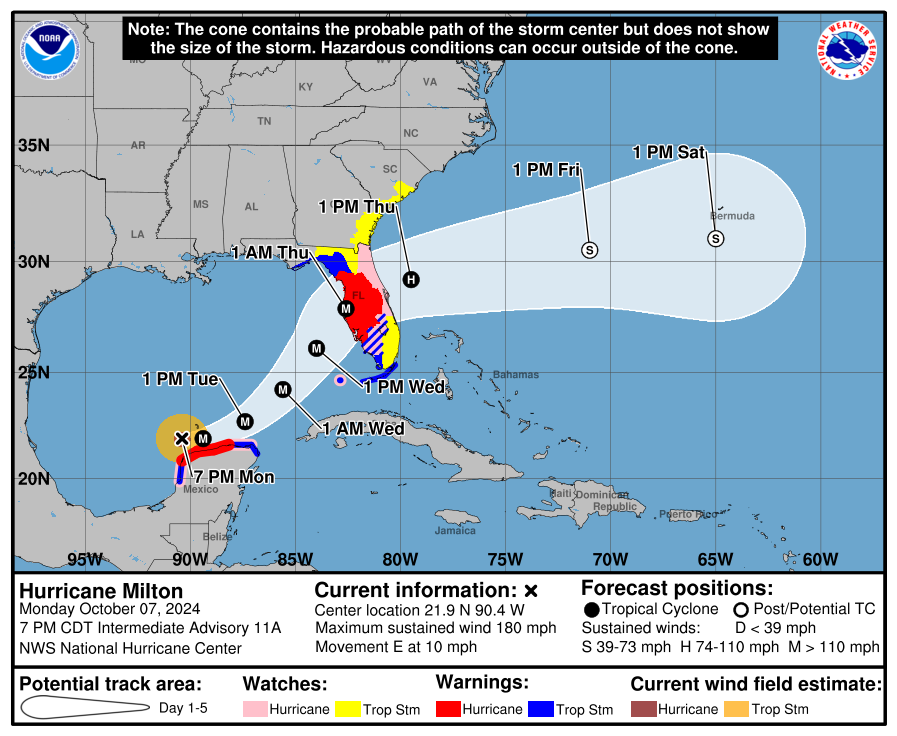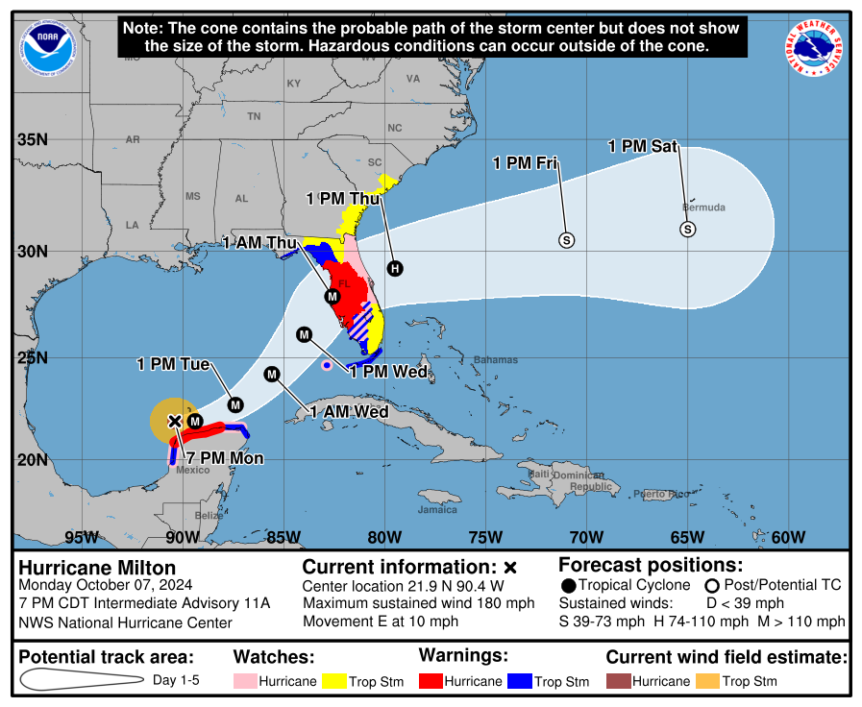
By Clint Thompson
Florida strawberry producer Matt Parke was delayed in receiving some of his plants to put in the ground. That delay may be a blessing in disguise with Hurricane Milton due to make landfall on Wednesday.
“We stopped (planting) four days ago. I was waiting on plants to get here, and the day after this news broke, I was like, ‘Let’s hold off.’ I’ve got plants in the cooler that are getting a little old, but I’d rather them be old and hit the floor than be young and take off with the kite,” said Parke, farm manager of Parkesdale Farms in Plant City, Florida.
Hoping for Category 1
The potentially devastating hurricane is currently a Category (Cat) 5 as it moves in the Gulf of Mexico with a landfall destination somewhere around Wednesday evening. Parke is hoping cooler weather will help decrease the storm’s intensity once it hits the Florida coast and minimize the impact on his plantings which started Sept. 26.
“The last couple of mornings we’ve been in the high 60s. A hurricane doesn’t like that kind of weather. Hopefully, it slows down as it hits the coast,” Parke said. “They’re expecting it to go from a Cat 3 as soon as it hits the coast to a Cat 1 within 30 minutes. A Cat 1 we can handle with minimal problems.
“As long as the wind doesn’t lift the plastic up and the rain washes the bed away, that’s the only thing that could affect us. The young stuff I have in the ground will be six or seven days old whenever we get the hurricane in. They’ll have all of their tap roots in, so that’ll be holding them in the ground. It would take a heck of a wind to blow them up.”
Winds Worse Than Rains
Parke is naturally more concerned about the hurricane’s wind speeds than its excessive rains. He emphasized that area of Florida is well drained and less prone to flooding.
“We’re in Florida. We naturally can handle water, even though we’re super saturated right now and had more rain than we’ve ever had in our lives in a short amount of time. I still don’t worry about it, because we can handle water,” Parke said. “If we could have it as a Cat 1 coming through, we’ll be in good shape. What’s worse than a Cat 1 is a tropical storm because they move slow and it’s a lot of rain.
“A Cat 1 is moving like 15 mph across the ground with 50 mph or 60 mph winds and gusts up to 90; we can handle that. Whenever we have Cat 2 or Cat 3, that’s pretty devastating.”










